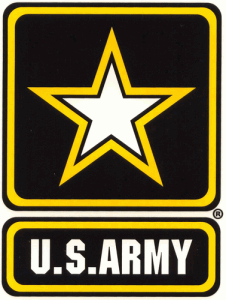 It’s not a secret that the US army takes special interest in groundbreaking technology, and was responsible for the development of GPS technology for example. GPS started out as technology exclusive to the military – but what about the Cloud? Cloud as a concept has been around for a long time and the technology has reached its maturity during public and industrial use. It would be disappointing to find out that the US army has yet to find a use for it, right?
It’s not a secret that the US army takes special interest in groundbreaking technology, and was responsible for the development of GPS technology for example. GPS started out as technology exclusive to the military – but what about the Cloud? Cloud as a concept has been around for a long time and the technology has reached its maturity during public and industrial use. It would be disappointing to find out that the US army has yet to find a use for it, right?
It turns out that yes, the US Army has been taking advantage of cloud technology, with High Performance Technologies, Inc. helping the federal government design and implement a private cloud that will convey the latest intelligence information to US troops in Afghanistan, in real or near-real time.
The US Army’s Big Data cloud program, which started in April of 2009, has a reach that can extend all the way to forward operating bases, which can also double as local nodes that collect data from UAVs or other sources. The cloud went full live in March of 2011, after the US army has done extensive tests and proven that the cloud can really meet their needs when it comes to handling “intel” analysis, processing, and production.
Dubbed the Distributed Common Ground System-Army (DCGS-A), the system will take 9 different IT systems for intelligence gathering and analysis and deploy them into a single cloud-based architecture. The DCGS-A will serve as a direct replacement for the various stovepiped systems that the military has been using to collect and analyze intelligence data. The main problem with the old systems is that they tend to use proprietary data formats, which means they are not interoperable. The new replacement will speak a language that’s common across the intelligence community.
Abandoning Proprietary Data
The DCGS-A has already received the greenlight from Pentagon, and the system itself is fully compliant with the common architecture for IT systems in the overall intelligence community. The new system wasn’t embraced immediately, though. The DCGS-A got some negative national media attention a year or so ago, when a lot of service members voiced out a desire to use the old data analytics platform, Palantir, over DCGS-A under the mistaken belief that the former had some functions for intelligence analysts that the latter didn’t have.
The total number of requests for a deployment of Palantir was 13, and the army fulfilled 9 of them, citing that the reasons for the request had merit, as Palantir was easier to use for the servicemen who grew accustomed to the system. However, the army believes that the situation will change once a people are properly trained in the use of DCGS-A, as Palantir simply didn’t comply with the requirements of the military, particularly with regard to information sharing and data interoperability.
Legacy Systems to Be Phased Out This Year
A new version of the DCGS-A is currently being tested, with the aim of fixing certain kinks in the top secret corners of the system. The elements are scheduled to be tested in the second half of 2013, during the US Army’s Network Integration Evaluation. Once the new iteration passes the Army’s testing, it will get deployed as a replacement for all the legacy systems that have been filling out the gaps.
All of these articles keep coming out about how awesome the cloud is and how much it will enhance efforts of service members in combat. The same story has been told for the last 6 years. It still doesn’t work. Having been a DCGS user (due to no other options provided by the Army and the G2 stonewalling COTS solutions) and having it crash and burn on multiple combat tours, I’m getting sick of hearing it.
“A new version of the DCGS-A is currently being tested, with the aim of fixing certain kinks in the top secret corners of the system. The elements are scheduled to be tested in the second half of 2013”.
So they’re saying that by end of 2013 or early 2014 the testing will be completed. How do you train users (who probably received similar poorly planned and inefficient training 5 times in the past) so that they can actually use the system before the Afghanistan pullout?
Their ‘Cloud’ sounds like a ton of hot air to me.
Two tours in AFG and I have yet to see a cloud, unless it’s full of dust. Even at the big bases things don’t work as glowingly as this article describes. And what exactly is the “mistaken belief that the former had some functions for intelligence analysts that the latter didn’t have”? You mean for it to work? Because Palantir worked, and the DCGS ‘cloud’ doesn’t. Palantir has an open API, go check the website…DCGS is like a black hole, once it goes in it’s never coming out.